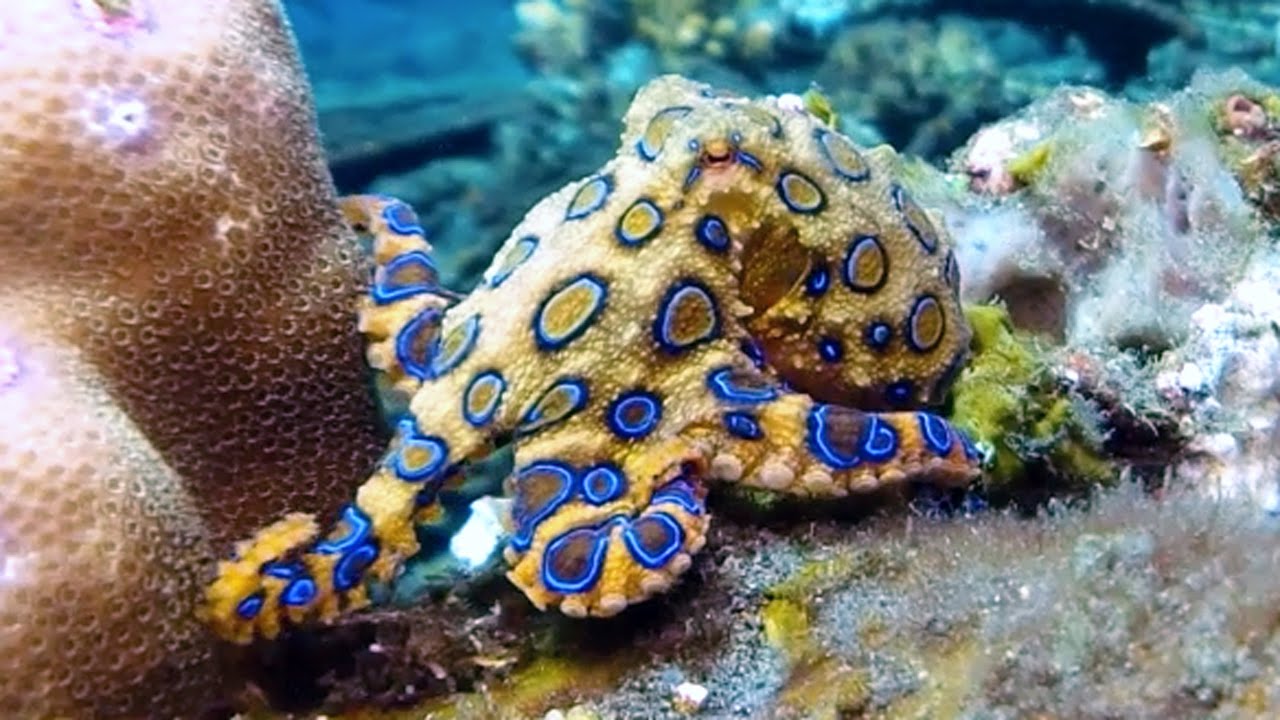The blue-ringed octopus is one of the most venomous marine creatures in the world, and its bite can lead to severe medical complications or even death. Despite its tiny size, the blue-ringed octopus can deliver a potent toxin known as tetrodotoxin, which can cause paralysis and respiratory failure in humans. Understanding the survival rate following a blue-ringed octopus bite is crucial for both medical professionals and the general public, especially those who engage in activities in its natural habitat. In this article, we will delve into the details of blue-ringed octopus bites, their effects, and the survival rates associated with these incidents.
The survival rate after a blue-ringed octopus bite can vary greatly depending on several factors, including the timeliness of medical intervention, the amount of venom injected, and the overall health of the victim. This article aims to provide comprehensive insights into the risks associated with blue-ringed octopus bites, the symptoms to watch for, and the critical steps to take in case of an emergency. By raising awareness about this fascinating yet dangerous creature, we hope to inform and educate readers on how to stay safe while enjoying marine environments.
Throughout this article, we will examine various aspects related to blue-ringed octopuses, including their habitat, behavior, and the nature of their venom. Additionally, we will explore real-life case studies that highlight survival rates and outcomes following bites. By the end of this article, readers will have a better understanding of the blue-ringed octopus and the necessary precautions to take when encountering this unique species.
Table of Contents
- 1. Overview of the Blue-Ringed Octopus
- 2. Habitat and Distribution
- 3. The Bite and Venom of the Blue-Ringed Octopus
- 4. Symptoms of a Blue-Ringed Octopus Bite
- 5. Survival Rate After a Blue-Ringed Octopus Bite
- 6. First Aid Response to a Bite
- 7. Case Studies of Blue-Ringed Octopus Bites
- 8. Prevention and Safety Measures
1. Overview of the Blue-Ringed Octopus
The blue-ringed octopus belongs to the genus Hapalochlaena and is known for its striking blue rings that appear when the animal feels threatened. These small cephalopods typically measure around 12 to 20 centimeters in length and are found in the Indo-Pacific region. There are four known species of blue-ringed octopus, each possessing the same potent venom.
2. Habitat and Distribution
Blue-ringed octopuses primarily inhabit shallow waters in coral reefs, tide pools, and rocky substrates. They are commonly found in regions ranging from Japan to Australia, and their preferred habitats often overlap with popular diving and snorkeling areas. This proximity to human activity increases the risk of accidental encounters and bites.
Key Characteristics of Blue-Ringed Octopuses
- Colorful blue rings that serve as a warning to predators.
- Small size, making them easy to overlook.
- Incredible camouflage abilities, allowing them to blend in with their surroundings.
3. The Bite and Venom of the Blue-Ringed Octopus
The venom of the blue-ringed octopus contains tetrodotoxin, a highly potent neurotoxin that affects the nervous system. A single bite can deliver enough venom to kill 26 adult humans within minutes. The venom works by blocking sodium channels, leading to paralysis and respiratory failure.
4. Symptoms of a Blue-Ringed Octopus Bite
Symptoms of a blue-ringed octopus bite can manifest within minutes and may include:
- Nausea and vomiting
- Dizziness or light-headedness
- Muscle weakness or paralysis
- Respiratory distress
- Loss of consciousness
5. Survival Rate After a Blue-Ringed Octopus Bite
The survival rate post-bite is heavily influenced by the speed of medical intervention. With prompt medical care, the survival rate can be as high as 80%. However, delays in treatment can significantly decrease the chances of survival.
Factors Influencing Survival Rates
- Time elapsed before receiving medical assistance
- Severity of the bite and amount of venom injected
- Overall health and age of the victim
6. First Aid Response to a Bite
In the event of a blue-ringed octopus bite, follow these first aid steps:
- Call emergency services immediately.
- Keep the victim calm and still to slow the spread of venom.
- Apply pressure to the bite site to slow venom absorption.
- Monitor breathing and be prepared to administer CPR if necessary.
7. Case Studies of Blue-Ringed Octopus Bites
Several documented cases of blue-ringed octopus bites provide insight into survival outcomes. For instance, a case study published in the Journal of Marine Biology detailed the experience of a diver who survived a bite due to immediate medical attention. The victim exhibited classic symptoms but was stabilized after receiving antivenom within an hour.
8. Prevention and Safety Measures
To reduce the risk of blue-ringed octopus bites, consider the following safety measures:
- Avoid touching or provoking octopuses encountered while diving or snorkeling.
- Wear protective gear if engaging in activities in known blue-ringed octopus habitats.
- Educate yourself and others about the appearance and behavior of blue-ringed octopuses.
Conclusion
In conclusion, the blue-ringed octopus poses a significant risk to those who encounter it in the wild. Understanding the survival rate following a bite, the symptoms to watch for, and the necessary first aid responses can make a difference in outcomes. By educating ourselves and practicing caution, we can appreciate these remarkable creatures while minimizing risks. If you found this article informative, please leave your thoughts in the comments, share it with others, and explore more articles on our site for further learning.
Final Thoughts
Thank you for reading! We hope you gained valuable insights into the blue-ringed octopus and its bite. Remember to stay safe while exploring marine environments and feel free to visit us again for more informative content.




